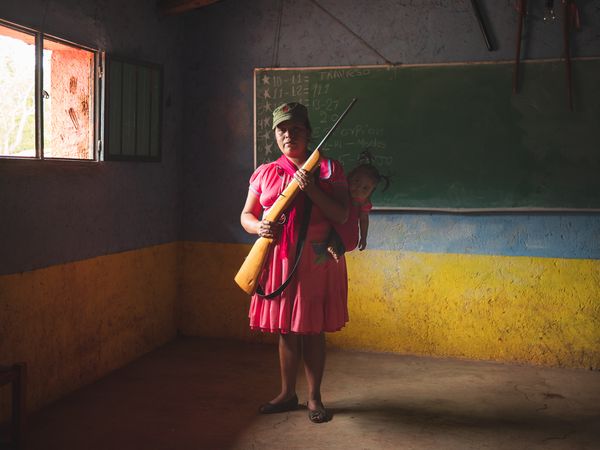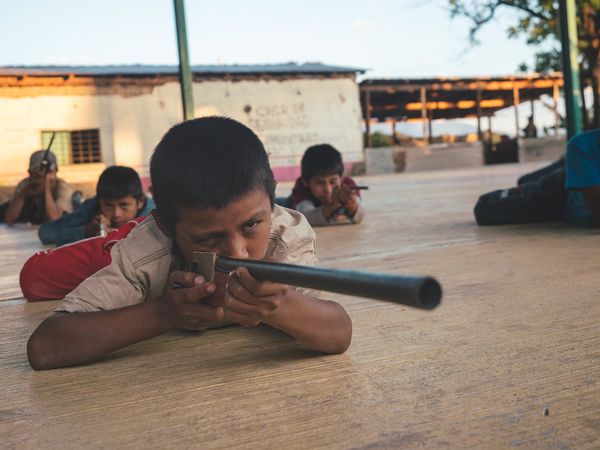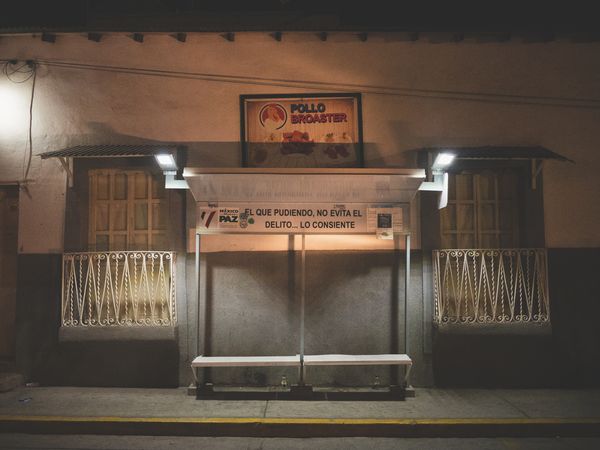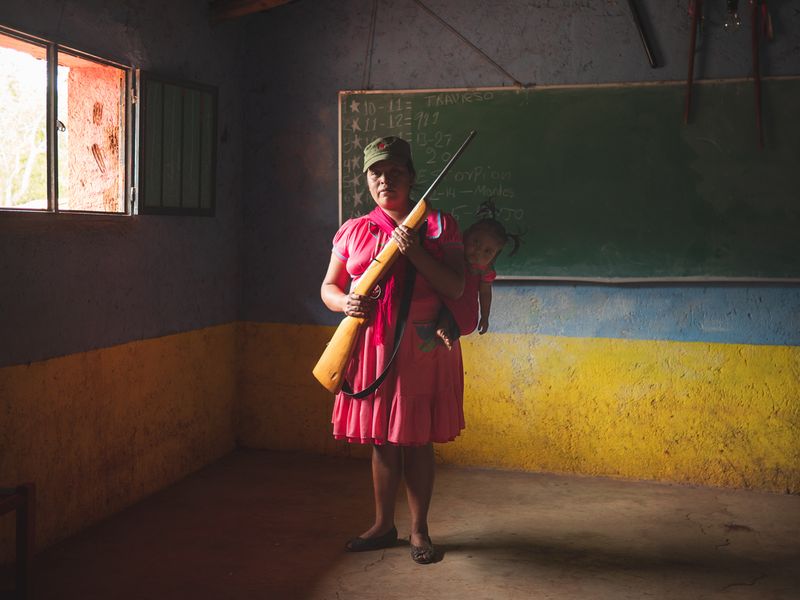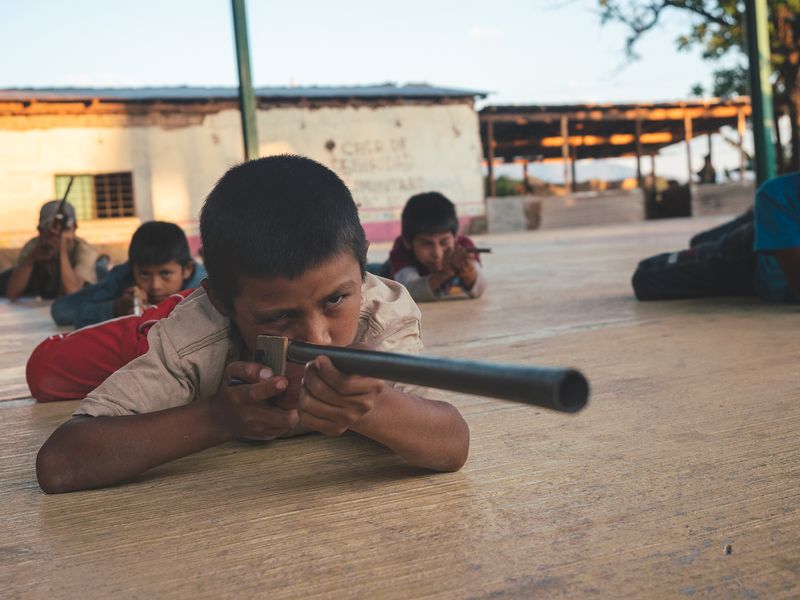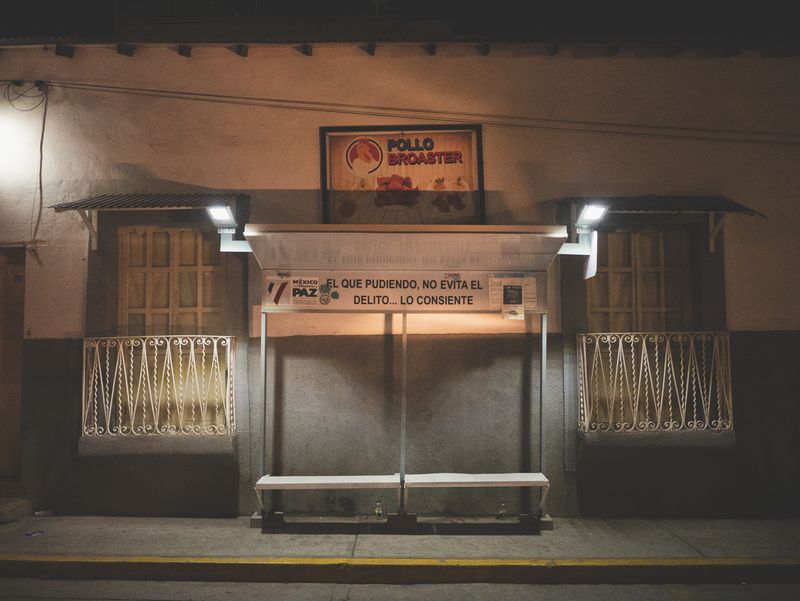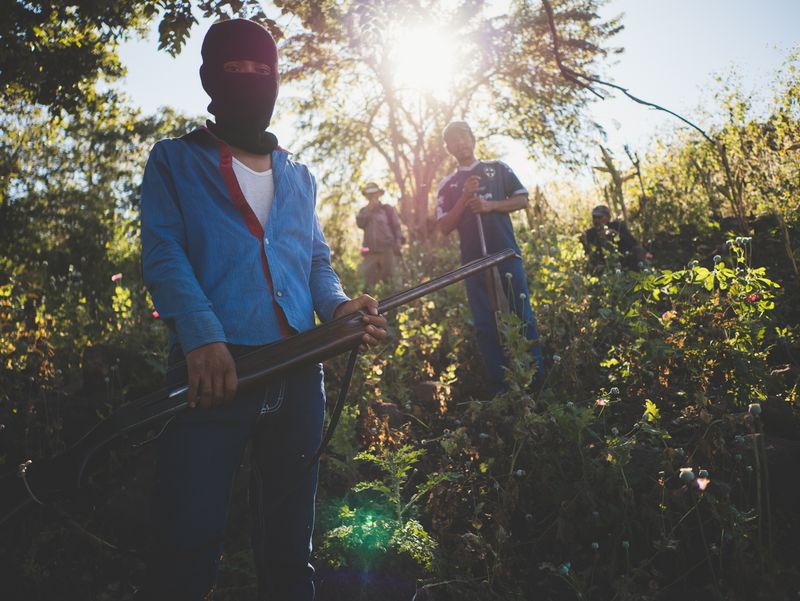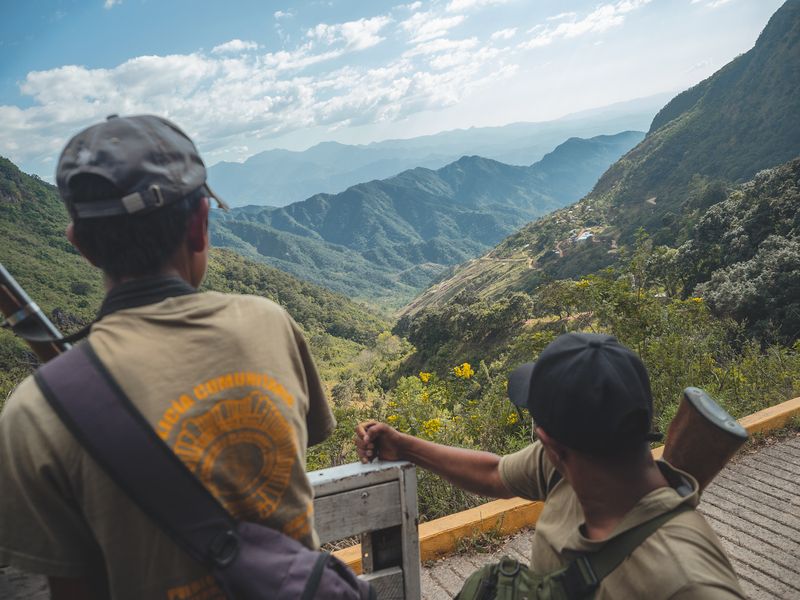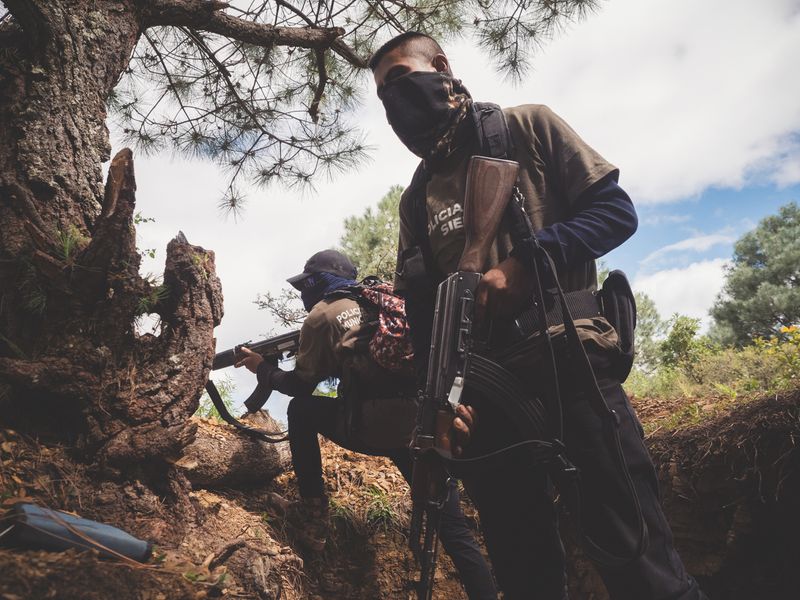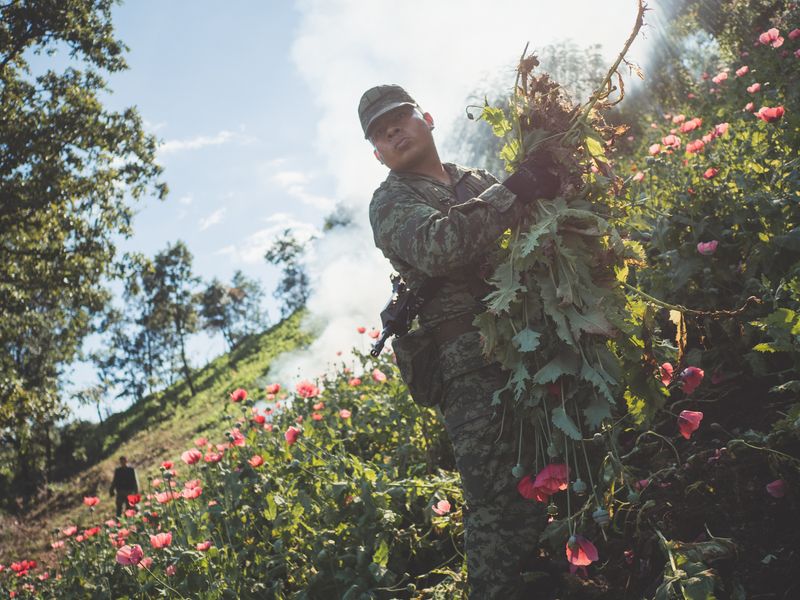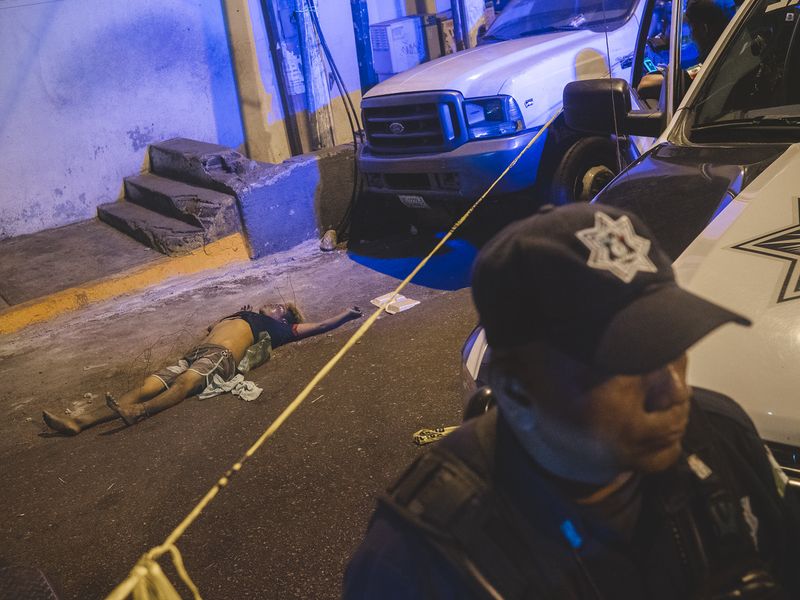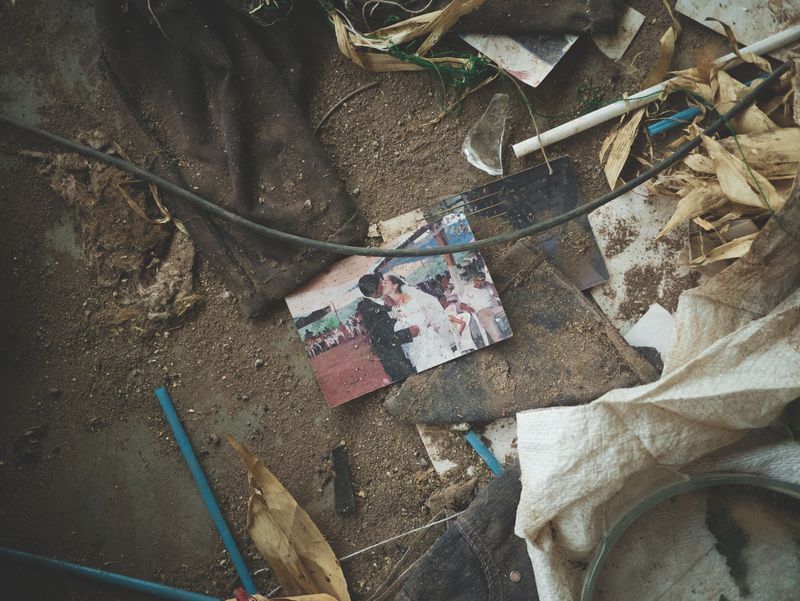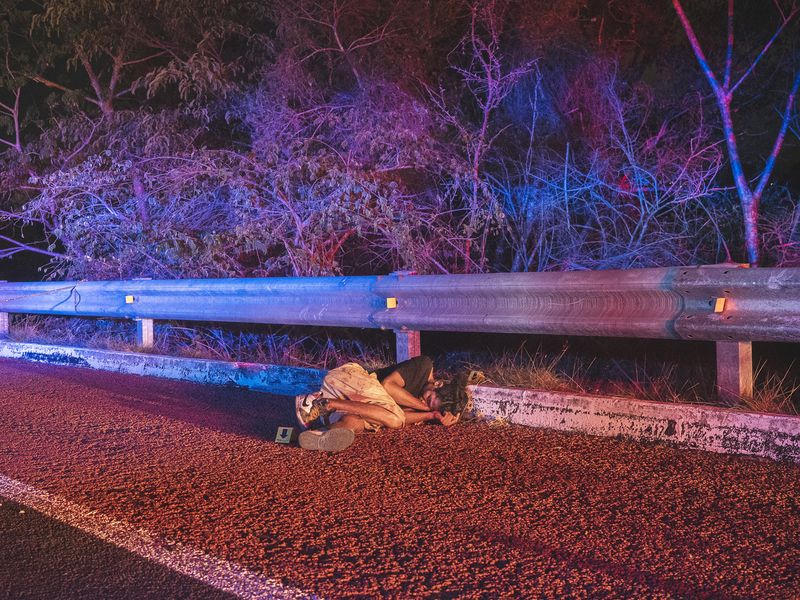Forgotten Guerrero
-
Dates2018 - 2020
-
Author
This three year work documents the social and political climate in the Mexican state of Guerrero, a key player in the country’s drug war.
Guerrero, the top producer of poppy in Mexico, is hostage to violence and extortion by criminal groups and cartels fighting to control drug supply, mostly heroin for the U.S. It is home to more non-state armed groups than any other region: there are 40 groups between cartels, criminal groups, and community police (autodefensas).
In large urban centres, such as Chilpancingo, Chilapa de Alvarez and Acapulco, cartels and criminal groups fight to control land, spreading terror among the population. They exert power and control over the locals by abusing their fear, a phenomenon also known as necropolitics.
The lack of basic security often forces inhabitants of smaller towns to abandon their homes in search of safety, leading to an increasing number of pueblos fantasma, ghost villages. In Guerrero it’s easy to die and even easier to disappear: in this year alone, 3,239 people have been reported missing.
In Jan. 2020, international media reported that an autodefensas was recruiting children, suggesting that many of these groups have strayed from offering citizen protection. In fact, collusion and complicity by the state has made it difficult to distinguish between autodefensas and purely criminal organisations, partly because of their significant political and social influence.
The state has also provided insignificant attention to security initiatives, like the National Guard founded in 2019 by President López Obrador. With personnel and hardware provided by the armed forces, and 0 budget, the operation has had little impact.
Studies estimate that the national impunity rate for murder in Guerrero is 96%, compared to the national rate of 90% (UNESCO 2020); In the past 10 years, there have been nearly 20,000 homicide victims, of which 5,116 in the three years since this project began.
